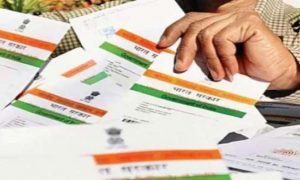Unified Payments Interface (UPI) is a real-time payment system that has revolutionised digital payments in India. Developed by the National Payments Corporation of India (NPCI), it allows users to instantly transfer money from one bank account to another typically via a smartphones. However, like any other digital platform, there can be occasions where, due to various unavoidable reasons, UPI transactions may fail.
Failure of UPI transactions can be distressing, given they are typically immediate and real-time. Therefore, it’s essential to know the steps to follow if such a situation arises. This article outlines the things you must do when your UPI transactions fail.
Read More: What is the difference between PAN and PRAN cards?
1. Verify your bank balance: You must check your account balance. Sometimes, a transaction might fail due to insufficient funds in your linked bank account. If this is not the issue, you must look further into the matter and call your bank’s customer care.
2. Check transaction status: The NPCI provides a Unique Transaction Reference (UTR) number for every UPI transaction. You must check the status of your transaction using this number. If the transaction status shows pending, wait for a while because processing might take some time.
Read More: Rs 2000 Withdrawal: Can You Still Exchange/Deposit Banknotes After New Deadline? RBI Clarifies
3. Contact your bank: If your transaction has failed and the amount has been debited from your account, you must reach out to your bank or UPI service provider immediately. To resolve the issue, provide them with all necessary details like UPI transaction ID, UTR number, transaction time, and date.
4. File a complaint: All banks have dedicated helplines or customer care services. If your problem is unresolved within a reasonable time, lodge a formal complaint through these channels. Maintain records of all your complaints for future reference.
5. Approach NPCI: If the bank fails to address your issue, you can approach NPCI via their grievance redressal channels. This is crucial as NPCI governs and administers the entire UPI ecosystem.
Read More: How can NRIs and OCIs invest in National Pension System (NPS) to secure their future?
6. Contact the ombudsman: If your issue is unresolved, you can escalate it to the Banking Ombudsman. The ombudsman is appointed by the Reserve Bank of India (RBI) to address customer complaints about deficiencies in banking services.
7. Maintain patience: Remember that resolving such issues might take time. So, maintain patience and track the updates from your bank regarding your complaint.
Sometimes, technological advancements come with challenges. You must not panic but understand how to navigate those challenges and ensure you can utilise them optimally. Knowing what steps to take when a UPI transaction fails would make the process much smoother and less daunting. It helps minimise stress levels during such situations and restore faith in digital transactions.





































